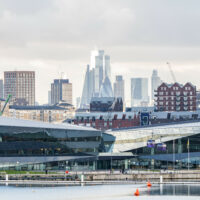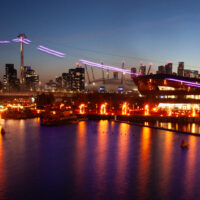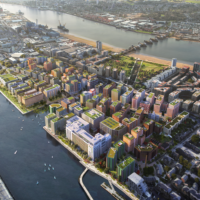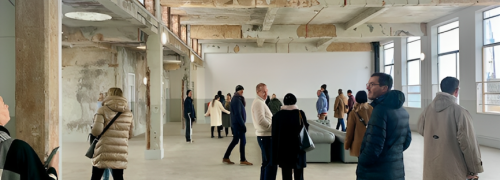
Regeneration news
Revitalising post-industrial areas: sharing lessons and insights in City Planning
The monumental scale of the docks and the presence of surviving dockside buildings and infrastructure provide a unique physical and historical context for the regeneration of the Royal Docks. Recently on a frosty December morning, city planners and developers from Sweden’s city of Malmo visited the Royal Docks on a walking tour, to learn more about how we’re transforming the area’s post-industrial landscape, into a vibrant and sustainable mixed-use destination.
Malmo is the third largest city in Sweden and shares the same commitment to sustainable and inclusive urban redevelopment as London. On a four-day study visit to the Capital the Swedish delegation visited a number of key regeneration sites, across east London, with a final stop at the Royal Docks to learn more about our approach to collaborative delivery and how landowners, urban planners, developers and communities are working together to unlock the area’s rich heritage.
The Royal Docks Team Programme Director Dan Bridge kicked off the tour at Royal Wharf - a thriving new riverside neighbourhood, overlooking the Thames, which is being developed by Ballymore. This new vibrant neighbourhood, which has a development programme of just six years includes 3,500 new homes, a new high street, pier, school, and other community amenities.
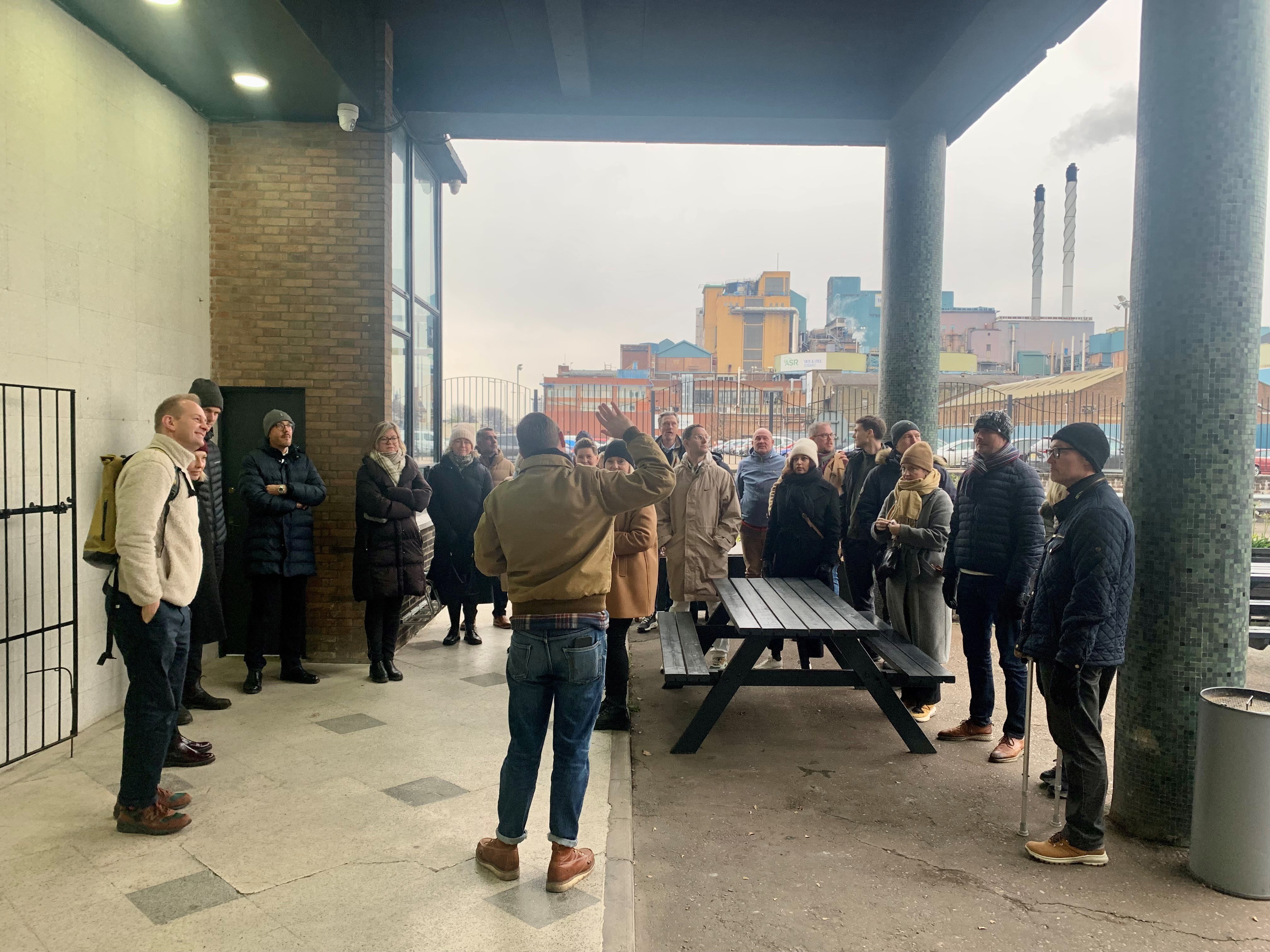
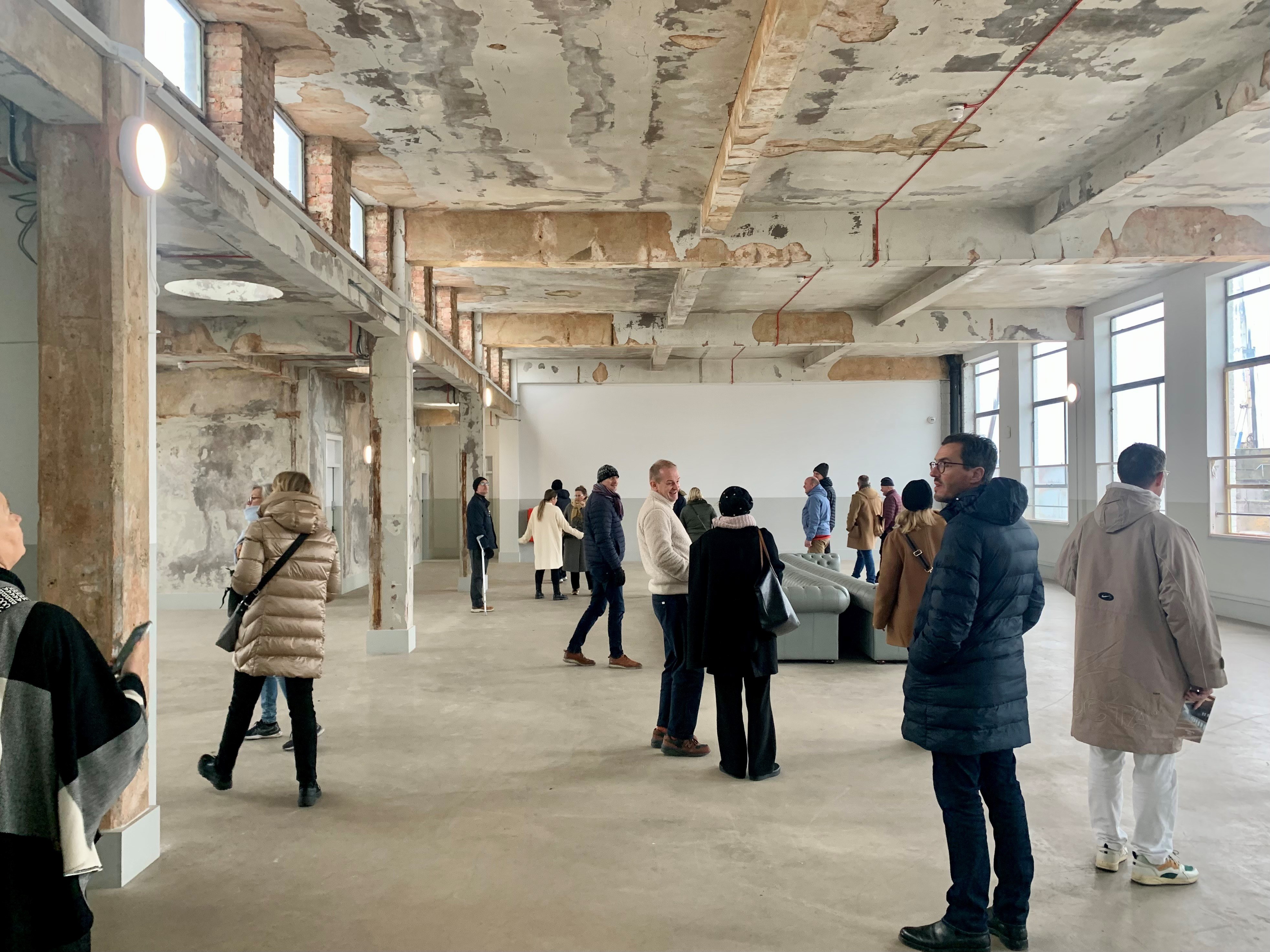
The team then walked across to Silvertown, the historic 50-acre site in the heart of the Royal Docks that is being transformed by The Silvertown Partnership. There, the delegation was greeted to a dramatic roof top view of the docks and two of the site’s most iconic heritage assets: Millennium Mills, a turn of the 20th century flour mill and Silo D, a Grade II listed building.
The group heard how the site is being reinvented into a vibrant new waterside neighbourhood for London - a transformation that will see Millennium Mills restored, the creation of 6,500 new homes, 50% of which will be affordable, 1.8 million sq. ft. of next generation workspace; and new space for cultural and community activities. How central and local government are working together with The Silvertown Partnership to deliver such an ambitious and complex regeneration project, with new area-changing infrastructure, including a new bridge across Royal Victoria Dock – was a key focus of discussion.
Following the Silvertown tour, the team moved onto the Factory Project, a new cultural centre and creative workspace in the Royal Docks that opened in 2022. The former Tate and Lyle Sugars warehouse and yards have been imaginatively restored by Projekt, who also run workspace in the nearby Silver Building. Nick Hartwright, the founder of Projekt, introduced the site and highlighted how public sector support, through the Royal Docks Good Growth Fund, has helped to refurbish approximately 100,000 sq. ft of vacant industrial space, into prime creative workspace, that is supporting the burgeoning artist and cultural community in the Royal Docks - including space for over 30 large-scale creative businesses from set designers, photography studios, music producers, and furniture designers.
The group also heard from David Knight and Cristina Monteiro of DKCM who shared their work on the development of an overarching place framework and water strategy for the Royal Docks, to help support comprehensive placemaking across the area. DKCM undertook detailed research to help define each of the area’s key neighbourhoods, their relationship to the water and each other, and how they will develop in coming years – providing valuable lessons for the Malmo delegation, which is also redeveloping its historic harbour.
Before a final stop at City Hall, the tour concluded at Café Spice Namaste, an award-winning Indian restaurant in Gallions Reach, singled out as one of London’s most sustainable restaurants by both the Evening Standard and Conde Nast Traveller. Here the tour group were able to exchange ideas and insights over a warming lunch, on the often unique and shared challenges and opportunities inherent in the redevelopment of post-industrial, waterside locations such as Malmo and the Royal Docks.
By Luke Kon
Royal Docks Team Develpment Manager
Public Practice Associate
